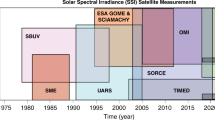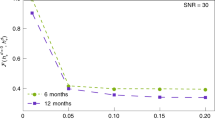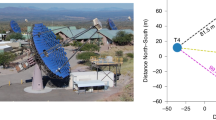Abstract
IN previous numbers of NATUBE I have described some of the new possibilities in solar research afforded by the spectrohelioscope.1 Since their publication I have developed a coelostat telescope and spectrohelioscope which can be built at such small cost that I trust it may come into general use. At least eight spectrohelioscopes will soon be systematically employed at solar observatories distributed around the world, thus permitting the sun's atmosphere to be observed frequently throughout the astronomical day. It is hoped that under this scrutiny few important eruptions will be missed, and that their connexion with aurora?, magnetic storms, and other terrestrial phenomena such as radio transmission can thus be more certainly determined.
This is a preview of subscription content, access via your institution
Access options
Subscribe to this journal
Receive 51 print issues and online access
$199.00 per year
only $3.90 per issue
Buy this article
- Purchase on Springer Link
- Instant access to full article PDF
Prices may be subject to local taxes which are calculated during checkout
Similar content being viewed by others
References
"Some New Possibilities in Solar Research," NATURE, July 3, 1926; "The Fields of Force in the Atmosphere of the Sun," NATURE, May 14, 1927.
This is nearly the size of Hilger's plane grating K14, ruled with about 14,400 lines per inch at the National Physical Laboratory on a surface 3·5 cm. × 5 cm.
Loaned me by the Massachusetts Institute of Technology, through the Mndness of Dean Goodwin.
The most promising means of reproducing reflecting gratings appear to be either an electrolytic process or the method described by Merfieid (Proc. Roy. Soc. Victoria, vol. 38, 1926). The latter can perhaps be used for copying speculum metal as well as glass gratings by adopting means of preventing firm adhesion of the cathode deposit.
"Recurrence Phenomena in Terrestrial Magnetism," Phil. Trans., Series A, vol. 227, pp. 21–62.
Author information
Authors and Affiliations
Rights and permissions
About this article
Cite this article
HALE, G. An Inexpensive Solar Telescope and Spectrohelioscope. Nature 121, 676–680 (1928). https://doi.org/10.1038/121676a0
Issue Date:
DOI: https://doi.org/10.1038/121676a0
Comments
By submitting a comment you agree to abide by our Terms and Community Guidelines. If you find something abusive or that does not comply with our terms or guidelines please flag it as inappropriate.



